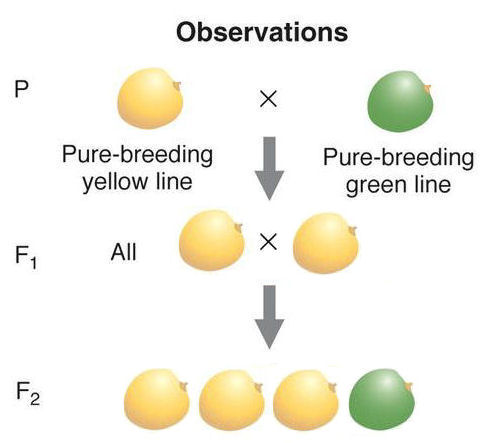Genetic variety has to do with our Reebops because all of our bugs don't look exactly alike. They all may have similarities, but none are exactly alike, just like humans aren't exactly alike. Reebop's are different because of genetic variety. For example, my P1 bug has a green and brown body while my F1 bug has only green. Another example is that my F1 bug has curved feathered anntenaes and my F2 bug has curved anntenaes with no feathers on them. Genetic variety happens because the bug that mated with the P1 generation, or any other generation, might have had some other traits that the zygote will inherit.
 From this picture you can see that the F2 generation is a variety of green and yellow pease because the P generation had a green pea, so the genetics can be passed along of having a green pea.
From this picture you can see that the F2 generation is a variety of green and yellow pease because the P generation had a green pea, so the genetics can be passed along of having a green pea.

